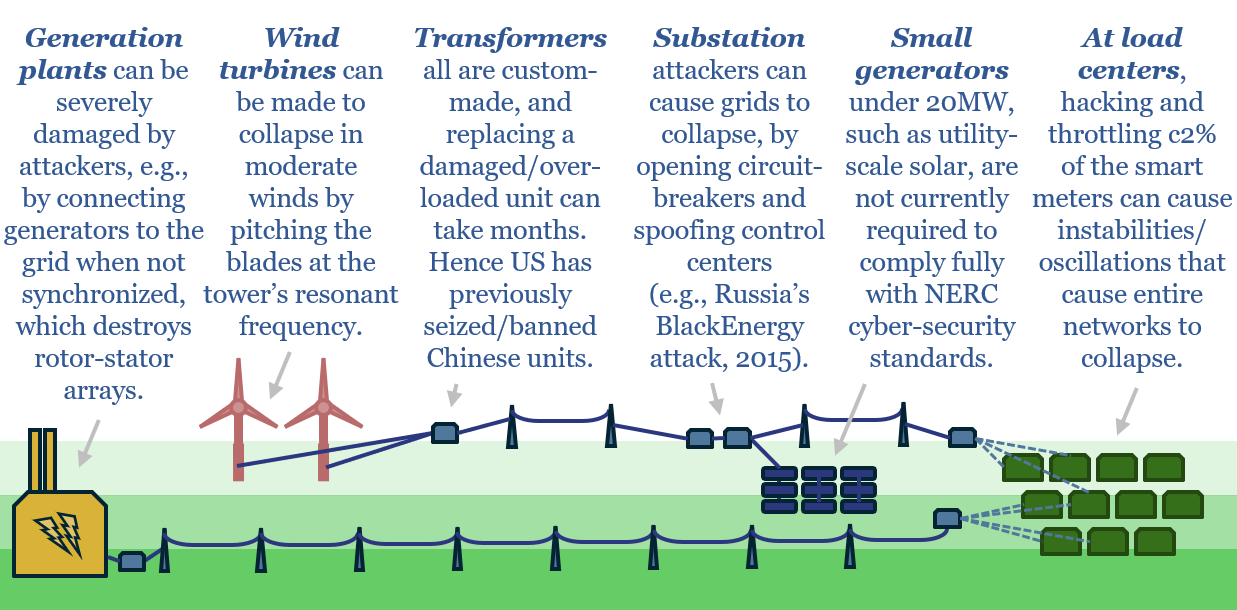National security risks are rising in developed world energy systems, as geopolitics grow more adversarial, and cyber-attacks are at new highs. This 16-page report covers national security in energy. We find that electrification is on balance making energy systems more vulnerable, then outlines mitigation measures, and opportunities?
National security in energy matters more than ever, as a major grid outage can cause $1trn in economic damages, the number of attacks doubled in 2022, continued rising in 2023-24, and some sources now say that energy/utilities are the “most cyber-attacked industry in the world”.
To bring this to life, some of the key risks, vulnerabilities and past cyber attacks are reviewed — with case studies ranging from Stuxnet to the Colonial Oil Pipeline attacks — on pages 2-6.
We have been receiving questions such as “does renewable energy hurt national security”. Or “do any particular energy sources carry greater national security risks”. Our answer is that it is not helpful to apply labels such as “X = good, Y = bad”, as context always matters. Every single type of energy system has vulnerabilities, which can be exploited.
Hence this report draws out five key weaknesses, which resilient energy systems need to avoid. National security in energy requires self-sufficient supplies (page 6), avoiding vulnerabilities in foreign-sourced components (pages 7-8), strong reserve margins (page 9), duplication (or even quadruplication) of sensors and control systems (pages 10) and emergency storage (pages 11-12).
Electricity will rise from 37% of global useful energy today, to 65% by 2050. On balance, we reluctantly acknowledge that many initiatives aimed at boosting electrification, and especially those aimed at unleashing renewables, have made energy systems more vulnerable, for reasons in the discussion on pages 2-12.
Managing national security in energy, across our changing energy system, will expand the global cyber security industry from $200bn pa to $300bn pa and create a moat around many large capital goods companies. This space is large and complex, but the note concludes by highlighting interesting companies that have crossed our screens (public and private), on pages 13-16.
